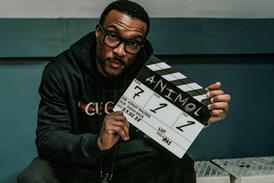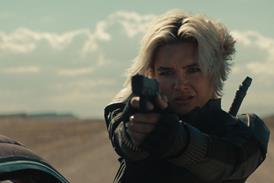The Argentine director and actress both talk about a woman who lives with a pack of dogs, which receives its world premiere in competition at International Film Festival Rotterdam (IFFR).

Argentine actress Verónica Llinás and director Laura Citarella’s jointly-directed Dog Lady (La Mujer de los Perros) follows a woman living a self-imposed, vagabond existence with a pack of dogs on the edge of Buenos Aires, where the city gives away to the wilderness of the Pampas.
The feature is the latest work to come out of the El Pampero Cine Collective, founded by Llinás’s brother Mariano Llinás alongside Citarella, Alejo Moguillansky and Agustin Mendilaharzu, which created films such as Extraordinary Stories and Ostende.
“We’re a group of friends who make films together, a sort of collective if you like – it’s very informal. It was founded by Mariano ten years ago and now we’re four people. Alejo is a director who also edits, I producer and direct as does Mariano – we constantly change our roles. We’re a community,” says Citarella.
“Our films often screen at festivals at home but La Mujer is particularly exciting for us because it’s the first time we’re premiering a film internationally,” says Citarella.
The film is partially inspired by the area where actress Llinás, who does not belong to the collective, lives with a pack of dogs although it is in no way a representation of her life, the pair explain.
“The film is a collaboration between Veronica and El Pampero in which we brought her vision to reality,” says Citarella.
Llinás, who is best known for her theatre work in Argentina, says the story stems from her own acting education in which she was taught to employ whatever was around her to create a story or a character.
“It is not about my life but it is made with my dogs and in my neighbourhood on the outskirts of Buenos Aires. I am playing a fictional character against a real backdrop… the dogs are being themselves, they’re not acting,” says Llinás.
“It is created out of possibilities. I come from a school of acting that taught me to produce art with whatever I have around me,” she continues. “In a way this is transposed into the character in the film, she forages and lives off what she can find.”
“Verónica’s way of working was very much in sync with how we work at El Pampero,” says Citarella.
The trajectory of the story is spread over the four seasons. This structure resulted in the low-budget film taking three years to shoot from the summer of 2012.
“Of course we weren’t shooting every day but we had to wait for seasons to pass, but we lost a season, so we had to wait for the following year to shoot,” explains Llinás.
Citarella says they often improvised or changed the planned storyline in response to outside events beyond there control.
“The process of making the film was very close to reality. We invented a lot of things while we were making the film on basis of what happened,” says Citarella, revealing that at one point the production was brought to a grinding halt when they were mugged during shoot.
“Of course we had set ideas at in development phase but then we had to deal with the reality of the place in which we were making the film,” says Citarella.
In many ways, the strange hinterland between the city and the Pampas is a character in the film.
“It’s a strange place, a sort of cross-roads for all sorts of different people. On one hand, it’s a weekend and holiday destination but a few miles down the road you find shanty encampments,” says Llinás. “It’s a sort of No Man’s Land and that’s what makes it so fascinating.”
Having finished this project, Citarella is now mulling a solo work, a sequel to her 2011 feature Ostende, about a girl who wins a holiday to a big hotel on the outskirts of Buenos Aires, set in a different location.



































No comments yet